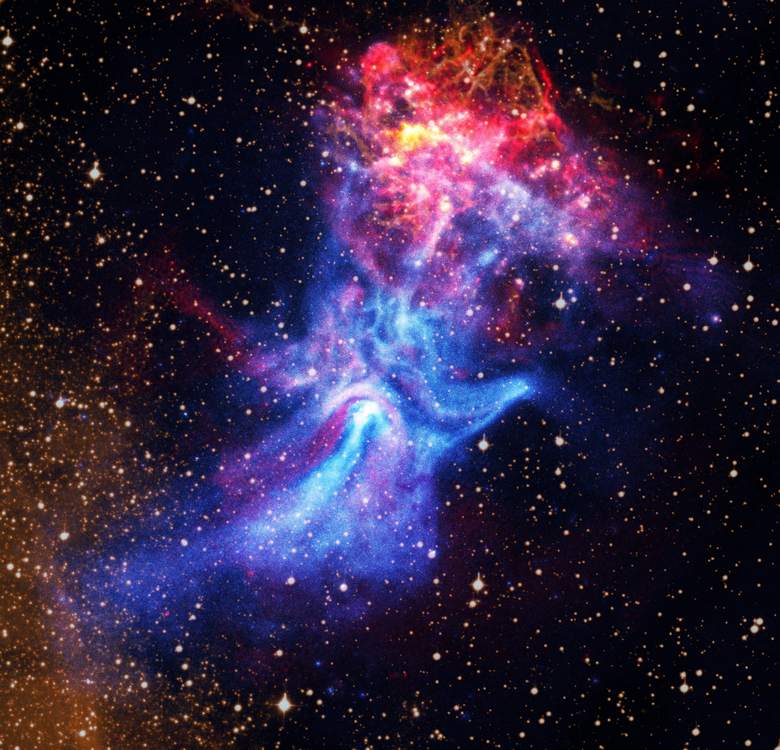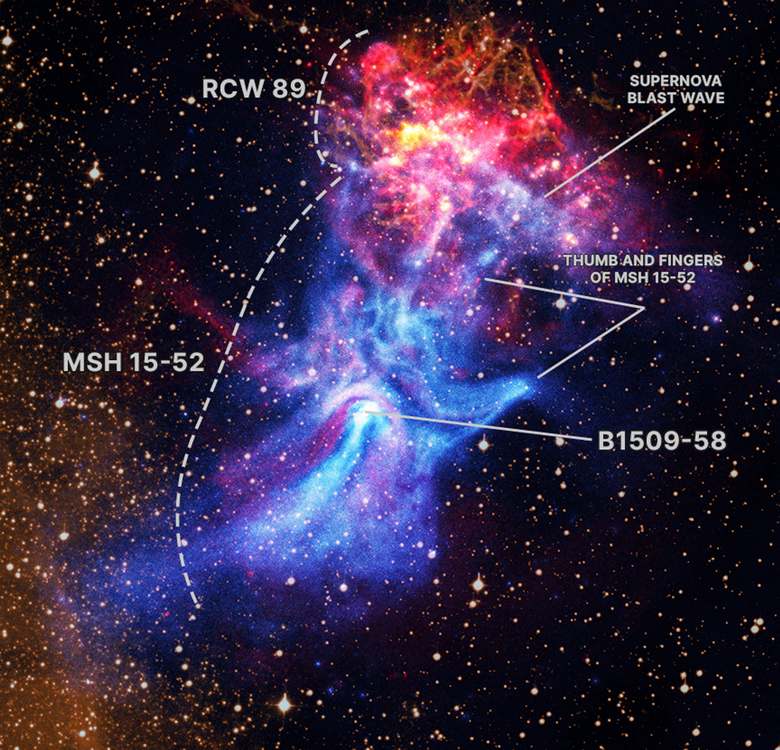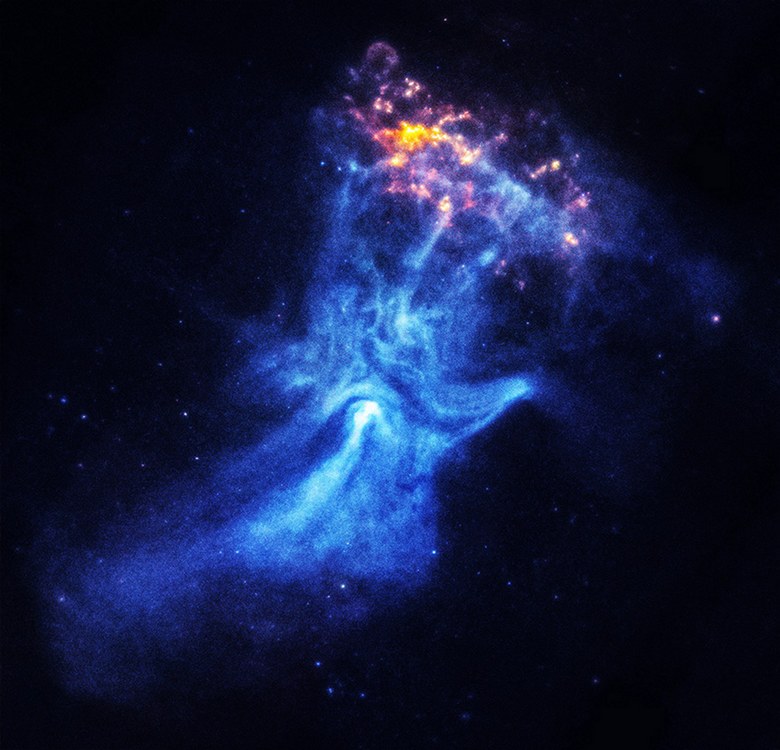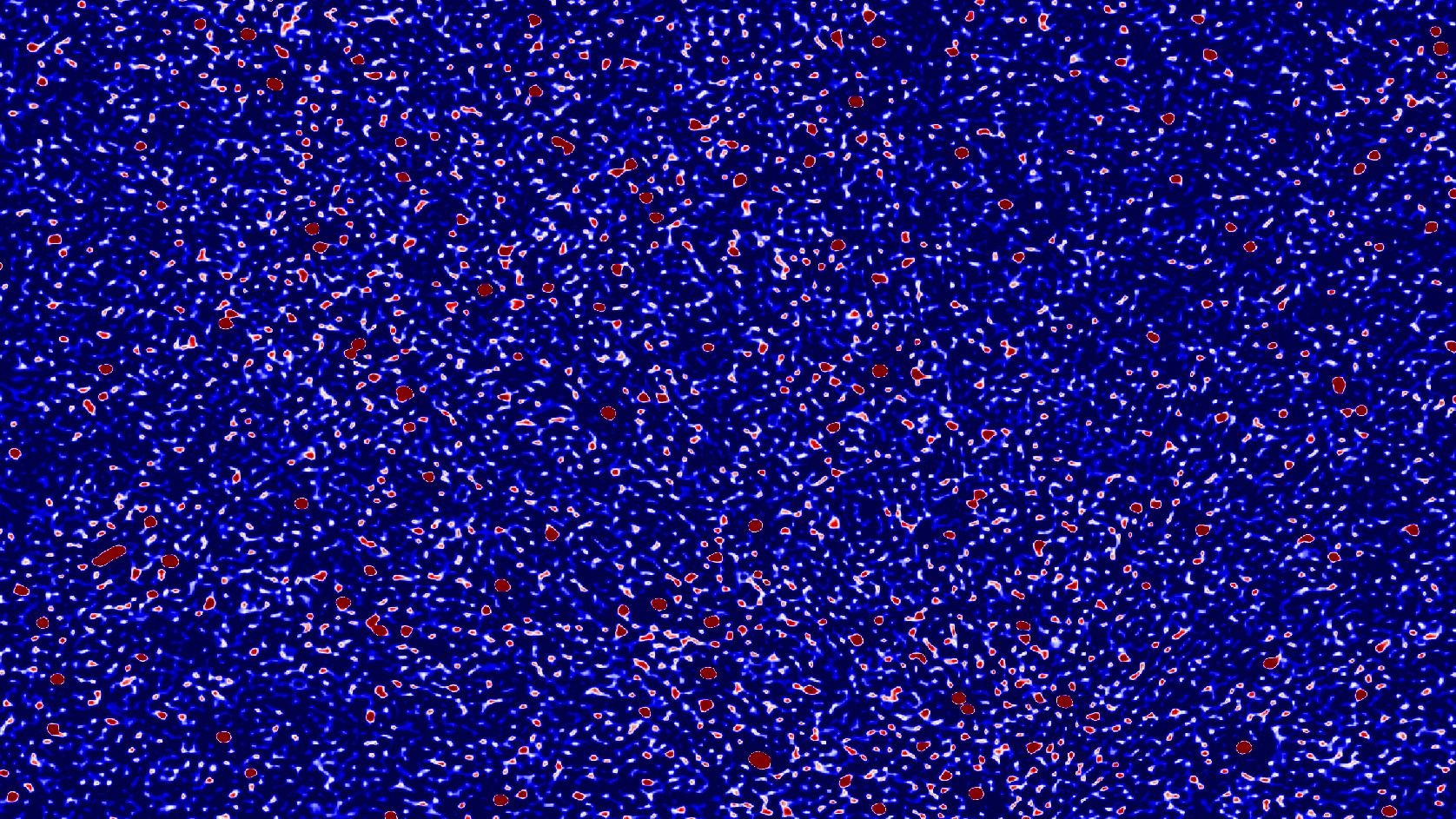
A coalition of telescopes have allowed astronomers to produce an image of the nebula MSH 15-52 in unprecedented color and detail.
Centered in the middle of the nebula is a pulsar, or the rapidly-spinning, extremely dense remnant of an exploded star. Captured together, some astronomers see in the mixture of the two the image of a hand.

In 2009, NASA’s Chandra X-ray Space Observatory released a captivating image of this pulsar, designated B1509-58, located approximately 17,000 light-years from Earth.
Since then, astronomers have used Chandra and other telescopes to continue to observe this object. Now, new radio data from the Australia Telescope Compact Array (ATCA) has been combined with Chandra’s X-ray data to provide a fresh view of this exploded star and its environment, to help understand its peculiar properties and shape.
This tiny object, called a pulsar or neutron star alternatively, is responsible for producing the intricate nebula which spans over 150 light-years, or about 900 trillion miles.
The researchers from Chandra do not fully understand all that the data is showing them.
“One area that is perplexing is the sharp boundary of X-ray emission in the upper right of the image that seems to be the blast wave from the supernova.”

“Supernova blast waves are usually bright in radio waves for young supernova remnants like RCW 89, so it is surprising to researchers that there is no radio signal at the X-ray boundary,” some of the study authors wrote in a statement.
Further work is needed to provide better understanding of the complex interplay between the pulsar and the supernova debris.
MORE IMAGES FROM CHANDRA:
A paper describing this work, led by Shumeng Zhang of the University of Hong Kong, has been published in The Astrophysical Journal.
SHARE This Beautiful Image With Your Friends Who Love Space…

